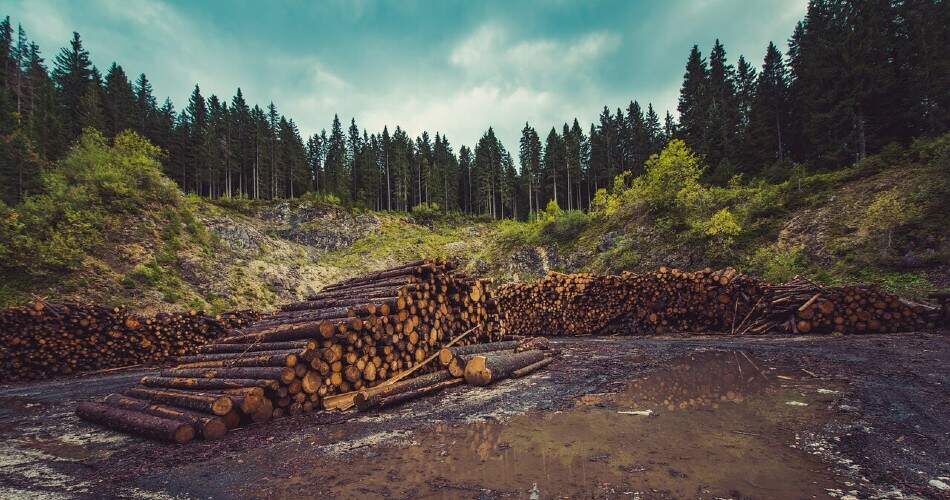Estimated reading time: 4 minutes
Deforestation has been a common practice since the late 19th century. Overpopulation and increased industrialization have added to the need for cutting down or burning forests. The effect of deforestation goes deeper than the trees. The clearing of forests causes soil to lose its main ally. When the soil suffers, the rest of the ecosystem does as well. Trees create living environments for animals, insects, and other plant life. When this environment is destroyed, these dependents lose their homes or their lives. The forest is an intricate infrastructure that faces doom, but the problem persists even after the forest is gone. Way below the tops of the trees, the soil is suffering the greatest loss and causing the greatest detriment.
Layers of the forest
Forests consist of many layers. There are four main layers: the emergent layer, the canopy, the understory layer, and the forest floor layer. The uppermost layer of the forest is the emergent layer and consists of the tallest trees spread out from one another. Birds, monkeys, and bugs call the emergent layer home. The next layer down is the canopy. This is the dense top of the trees in the forest. The canopy shades the ground below and protects it from harsh rains. Canopies in rainforests are home to nearly 50 percent of all plant life on Earth. When forests are destroyed, this ecosystem is lost forever. Since half of all plant forms live in the canopy of the rainforests alone, the Earth stands to lose oxygen production as well as millions of still undiscovered species. Below the canopy is the understory. The understory is home to the largest concentration of insects in the forest. Predators such as panthers, jaguars, and snakes, as well as reptiles and other creatures, call the understory home. Plants in the understory adapt to survive with less sunlight. The lowest layer of the forest is the forest floor. Grass, moss, and fungi grow at this level. The forest floor receives very little to no direct sunlight and the plants have adapted to this. The forest floor consists of debris such as fallen leaves, deceased wildlife, and roots. The moisture at the forest floor is high. This humidity is the key to the decay of fallen debris, be it plant or animal, which decomposes to become part of the soil. These decaying items add nutrients and substance to the soil of the forest floor. This creates a rich environment from which new plant life thrives.
Soil’s role
Soil holds so many life-giving properties. Soil encases seedlings and burrows insects. The nutrients in the soil also come from the decomposed matter on the forest floor. These nutrients feed the seedlings and give them the healthy start they need to grow into strong plants. The burrowing insects also depend on the minerals and nutrients in the soil to survive. Because the soil is the beginning and end of the life cycle in the forest ecosystem, it is safe to say that its survival is dire to animals and plants which call the forest home.
Soil also plays a vital role in the terrain of a land. When the trees that have roots within the soil are removed, the soil not only loses its food chain, it also loses its footing. In many sub-equatorial places, the soil, which was once at the floor of a forest, becomes loose and unstable. Heavy rains and floods cause this soil to shift and without the anchor of roots from the trees, the soil gives way to landslides, which erode the landscape of the land. When this soil washes away, it oftentimes reaches nearby waterways such as rivers and streams, where it heads downstream, causing more problems for those ecosystems currently in place. The soil clouds the waters, causing the death of many organisms that live beneath the surface. This chain reaction continues as the water flows out to sea, carrying soil from a deforested land.
Preventative and restorative measures
While humankind has taken more notice in recent years, there must be even more effort for reforestation, sustainable harvesting practices, and farming. The continuation of projects such as forest plantations and reforestation are necessary. Man must reverse the damage of decades and even centuries of tearing down forests for his own gain. Additionally, the practice of ″slash and burn″, which is a practice used to clear land for agriculture, must continue to go on the wayside, making room for the ″slash and char″ practice. This new practice not only prevents the forest from being burned down, but it also creates biochar, the product of the partial burn. This biochar in-turn provides much-needed nutrients to the soil, which has lost much of its natural substance.
It is evident that deforestation reaches to the far corners of the globe. As the wildlife and fauna of the forests lose their home and lives, the soils take on the worst role of all as the dangers of landslides, erosion, and contamination of neighboring water supplies arise. If humankind does not take even more notice than previously to this dangerous practice, many more life forms will suffer, including man.
If you want to find out about the effects of fossil fuels and mineral resources on the environment, check out our article on this topic: What are the effects of fossil fuels and mineral resources on the environment?
[Photo from Pixabay]
